Most famous architects today or otherwise named top architects that are visionaries who push the boundaries of what’s possible and test established norms in the ever-changing field of famous architectures. The works of renowned architects such as Renzo Piano, Frank Gehry, Shigeru Ban and the most famous architect in the world Zaha Hadid can be seen wherever you go.
Architecture across the globe is a culmination of various ideologies and aspirations. It is similar to language- evolving with every new region, people, culture, and way of living. Over the years, many ingenious and famous architects have contributed towards building their cities, leaving an everlasting impression on the world map. Some of these have created a niche for themselves as the most influential and famous architects globally, inspiring young designers to think beyond the realms of conventional design. Let’s have a look at the top 25 famous architects and the top architectural projects worldwide that have stood the test of time creating the top architectural projects worldwide.
Most Famous Architects of the World
With a flair to make the built environment more comfortable, healthier, and happier; architects worldwide strived hard to produce architecture that pleased both the eye and the soul. Below is a list of top architects who redefined the stereotypes in design and created masterpieces that stand as testaments of architectural brilliance.
25. Bjarke Ingels
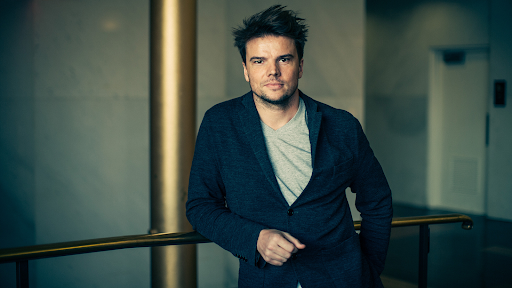
Born in Denmark in 1974, Bjarke Ingels is a leading Danish architect who has propelled himself into the forefront of contemporary architectural discourse with his bold and imaginative designs. He is renowned for his ability to fuse innovation, environment-consciousness, and a sense of playfulness within his architectural creations.
In 2005, Ingels founded his own architectural practice- Bjarke Ingels Group (BIG). The firm has rapidly gained international attention for its innovative and ambitious urban planning and architecture projects. Ingles’ designs are characterised by their dynamic forms, integration of sustainability principles, some consider Ingles one of the most famous sustainable architects alive.
Best known for his top architectural project among his creations, the Mountain Dwellings in Copenhagen, MÉCA in France, and 79&Park in Sweden. As one of the best architects in the world, Bjarke was on the list of TIME magazine’s 100 Most Influential People in 2016 and has also been awarded by RIBA and AIA for various projects.
Read: Top 10 Inspiring Architecture Websites
24. Le Corbusier

One of the world famous architects famous architects of the 20th century, maybe considered one of the greatest architects of all time is Le Corbusier. Who was born in 1887 in Switzerland. Recognized for his contribution to modern architecture and urban planning, Corbusier’s work features sleek lines, open spaces, and an emphasis on geometric forms. He embraced and advocated the idea of “form follows function” through his work.
Having penned an essay on the “Five Points of Architecture, ”Corbusier reflected his belief in efficient and rational design that responded to the needs of its occupants. He has been one of the pioneering architects defining the architecture of post-independence India.
Some of Corbusier’s most notable works include Villa Savoye in France, Chandigarh city planning in India, and the UN Headquarters in New York.
23. Frank Lloyd Wright

Frank Lloyd Wright, an American architectural pioneer, reshaped the course of modern architecture through his innovative design philosophy and distinctive approach. Born in 1867 in Wisconsin, his legacy transcends his iconic projects, revealing a profound philosophy that emphasises harmony between architecture, nature, and human life.
Wright’s architectural philosophy also referred to as “organic architecture,” sought to integrate built structures seamlessly with their natural surroundings. His designs reflect a deep belief in the interconnectedness of all elements within a space. He is one of the most famous architects whose work features horizontal lines, open spaces, and an emphasis on geometric forms that echo the patterns found in nature.
Throughout his career, Wright received numerous accolades, including the American Institute of Architects’ Gold Medal. The Robie House, Fallingwater, and the Guggenheim Museum remain not just structures but embodiments of his principles.
22. Jeanne Gang

Jeanne Gang is a visionary female American architect widely known for her innovative designs that harmonise functionality, sustainability, and community engagement. Born in Illinois in 1964, Gang’s architectural journey is strongly characterised by a people-centric approach to design.
At the helm of Studio Gang, the architectural firm she founded in 1997, Jeanne has developed a distinctive design language. It emphasises the integration of architecture with nature and social context. As one of the most famous architects, her projects often showcase an innovative use of energy-efficient materials and a sensitivity to the environment.
Some of Gang’s most celebrated works include the Aqua Tower in Chicago, the Nature Boardwalk at Chicago’s Lincoln Park Zoo, and Solstice on the Park in Chicago. She has garnered numerous awards and honours, including a MacArthur Fellowship, and being named one of TIME magazine’s 100 Most Influential People.
21. Alvar Siza

Born in 1933, Álvaro Siza Vieira, a renowned architect from Portugal. He is well-known for his expressive building techniques, which skillfully blend an innate love of nature with minimalism and practicality. His work is a tribute to the local history and spirit, displaying a regulated expression of modernity. Leça Swimming Pools and Porto’s Serralves Museum of Contemporary Art are two of Siza’s most famous works. There is a large body of his work that is characterized by clean, elegant lines and exact artistic shapes.
Siza had a significant impact on modern architecture. He had previously said, “What captivates me is the process, the transformation that a building undergoes from conception to a tangible entity within the landscape.”* His ability to uniquely combine space, light, and form is on full display in the design of the Church of Saint-Jacques-de-la-Lande in Rennes, France.
20. Peter Eisenman

Peter Eisenman was born in 1932 in New Jersey and is well known for his innovative and provocative building designs. Renowned for his unique approach that challenges traditional notions of form and function, Eisenman is a pioneer of deconstructivist architecture.
Eisenman believes in the power of architecture to convey meaning and evoke thought beyond mere functionality. His projects exhibit a deliberate fragmentation and abstraction of forms, creating a sense of dissonance and intellectual intrigue. He is one of the most famous architects worldwide.
As the founder of Eisenman Architects, he has led the firm to undertake numerous groundbreaking projects that challenge architectural norms. His finest works include the Memorial to the Murdered Jews of Europe in Berlin and the City of Culture of Galicia in Santiago de Compostela, Spain.
19. Ludwig Mies Van der Rohe

Ludwig Mies van der Rohe was born in 1886 in Germany and is recognized as one of the most famous architects across the globe. He is renowned for his famous dictum “less is more,” which encapsulates his design philosophy. Rohe believed in the power of simplicity and the use of essential elements to create buildings that were elegant, functional, and timeless.
His architectural firm, which he established in Berlin and continued in the U.S., was pivotal in shaping the International Style of architecture. His influence is also seen in the concepts of open floor plans, the use of industrial materials, and the idea of “universal space” that transcends cultural boundaries.
Some of his impressive projects include the Farnsworth House in the United States and the Seagram Building in New York City. Rohe’s contributions were recognized with numerous awards, including the Presidential Medal of Freedom in the United States and the Royal Gold Medal from RIBA.
18. I. M. Pei

Ieoh Ming Pei, one of the most famous architects, was born in 1917, in China. He stands out as one of the most influential architects of the 20th century, known for his unique approach to design that seamlessly blended modernist principles with elements of traditional architecture.
Pei’s design ideology was characterised by his belief in architecture’s ability to inspire and uplift individuals. He aimed to create structures that not only serve their practical purposes but also evoke a sense of wonder and contemplation. His work often showcased a harmonious dialogue between geometry, light, and space.
The Louvre Pyramid in Paris, the John F. Kennedy Presidential Library and Museum in Boston, the Bank of China Tower in Hong Kong, and some prime examples of his work. He received the American Institute of Architects Gold Medal and was also awarded the Pritzker Architecture Prize.
17. Rem Koolhaas

Born in 1944 in the Netherlands, Rem Koolhaas is a Danish architect famous for his unconventional views on architecture, urbanism, and society. His design philosophy is deeply rooted in critical theory and socio-cultural analysis. He believes in the importance of understanding and responding to the ever-evolving needs and complexities of modern society.
Koolhaas’ architectural firm, Office for Metropolitan Architecture (OMA), which he co-founded in 1975, has produced a diverse portfolio of projects that span the globe. He has also authored influential books on architecture and urbanism, such as “Delirious New York” and “S, M, L, XL,” which have further solidified his reputation as a thought leader in the field.
The CCTV Headquarters in Beijing, the Kunsthal Rotterdam, and the Seattle Central Library are some of his exemplary projects. One of the most famous architects, he has been conferred the Pritzker Architecture Prize.
Read: Stavros Niarchos Foundation Cultural Centre
16. Oscar Niemeyer

Architect Oscar Niemeyer was born in 1907, in Brazil. He was one of the most iconic and famous architects shaping modern architecture. His mastery of curvilinear forms and the ability to infuse his designs with a sense of fluidity, are often referred to as “sculptural architecture.”
Niemeyer’s design philosophy was rooted in his belief that architecture should be a manifestation of beauty and social progress. He championed the idea that architecture could shape society by offering innovative spaces that inspire creativity and human connection. His work often featured bold curves, free-flowing lines, and a harmonious integration of structure and space.
Niemeyer established his own architectural firm and collaborated with other renowned architects throughout his career. The Brasília Cathedral, the Niterói Contemporary Art Museum, and the Oscar Niemeyer Museum in Curitiba. are some classic examples of Niemeyer’s work.
Read: Learn How to Become a LEED AP BD + C With Less Time and Effort
15. Jean Nouvel

Born in 1945 in France, Jean Nouvel is one of the most visionary and famous architects known for his ability to create architecture that engages with its context. His work challenges traditional norms, often resulting in iconic and distinctive structures that redefine the urban landscape.
Nouvel’s design philosophy is characterised by his emphasis on context, culture, and narrative. He believes that each project should respond to its surroundings and tell a story through its architecture. His work often incorporates a diverse range of materials, textures, and innovative technologies to create dynamic and evocative spaces.
His portfolio includes projects of global significance such as The Louvre Abu Dhabi, the Philharmonie de Paris, and One Central Park in Sydney. He founded the architectural firm Ateliers Jean Nouvel, which operates on a global scale, collaborating with a diverse array of professionals to realise his unique visions.
Nouvel has also received accolades from institutions like the RIBA and AIA. He has also won the Pritzker Architecture Prize.
14. Francis Kéré

Francis Kéré was born in 1965 in Burkina Faso. He is one of the most famous architects known for his unusual approach to architecture that combines local materials, traditional techniques, and sustainable design principles. His dedication to improving the lives of marginalised communities through thoughtful and culturally sensitive architecture is what makes his work unique.
Kéré’s design philosophy revolves around the concept of “architecture as a tool for development.” He believes that architecture can play a pivotal role in addressing social challenges and providing functional spaces that empower communities. His work often focuses on creating environmentally friendly structures that respond to local climate conditions.
The Gando Primary School, the Serpentine Pavilion in London, and the Lycée Schorge Secondary School in Koudougou are some of his excellent works. Kéré has won the prestigious Aga Khan Award for Architecture and the Pritzker Architecture Prize.
13. B. V. Doshi

Balkrishna Vithaldas Doshi was born in 1927, in Pune, India. He was world-renowned for his holistic and human-centric approach to design. The ability to seamlessly integrate traditional Indian architectural principles with modernist ideas made him one of the most famous architects.
Doshi’s design philosophy was deeply rooted in the belief that architecture should respond to the needs of people and the environment. He emphasises the importance of creating spaces that foster human interaction, well-being, and a connection to nature. His work often incorporates sustainable design strategies and draws inspiration from traditional Indian architectural concepts.
The Aranya Low-Cost Housing project in Indore, the Institute of Indology in Ahmedabad, and the Premabhai Hall in Ahmedabad are some of his remarkable works. Doshi established his own architectural practice, Vastushilpa Consultants, which has contributed significantly to the architectural landscape of India and beyond.
12. Philip Johnson

Philip Johnson was born in 1906 in Ohio. He was a towering figure in the world of modern architecture and one of the most famous architects. Johnson’s career spanned several decades, during which he embraced different architectural styles and philosophies, making him a versatile and influential figure.
One of Philip Johnson’s defining characteristics was his ability to adapt and evolve. He started his career as a proponent of the International Style, famously co-curating the groundbreaking “Modern Architecture: International Exhibition” at the Museum of Modern Art in 1932. However, he later transitioned to Postmodernism, a movement he significantly contributed to popularizing.
Johnson’s portfolio includes notable projects such as the Seagram Building in New York City, designed in collaboration with Mies van der Rohe, and the AT&T Building (now the Sony Tower), an icon of Postmodern architecture. He also co-founded the firm Johnson/Burgee Architects in Manhattan in 1968. Johnson was a recipient of the Pritzker Architecture Award in 1979.
Read: Passive Solar Design: Everything You Need To Know
11. Antoni Gaudi

Born in Spain in 1853, Antoni Gaudi is widely regarded as one of the most extraordinary and distinctive architects in the history of mankind. His profoundly unique approach to architecture is characterized by his humble design philosophy that seamlessly melded nature, religion, and the spirit of innovation into his creations.
Gaudí’s architectural style is often associated with Catalan Modernism, but his work transcended traditional classifications. He believed that “originality consists of returning to the origin,” drawing inspiration from the natural world and incorporating organic forms and motifs into his designs. Gaudi is one of the most famous architects and his legacy lives on in the heart of Barcelona, inspiring architects and artists worldwide.
The Sagrada Família basilica in Barcelona, expected to be completed by 2026, exemplifies his majestic vision that harmoniously combines Gothic and Art Nouveau influences with intricate, nature-inspired ornamentation. Casa Batlo and Park Güell in Barcelona are among his other noteworthy projects.
10. Eero Saarinen

Eero Saarinen was born in Finland in the year 1910 and was later naturalized as an American citizen. He is one of the most famous architects whose work is characterized by their graceful curves and innovative use of materials.
Saarinen’s approach to design was deeply human-centric, seeking to create spaces that were not just utilitarian but emotionally resonant. He believed in the power of architecture to elevate the human experience. Eero Saarinen founded his architectural firm, Eero Saarinen and Associates, which continued his legacy even after his untimely death in 1961.
Saarinen’s most celebrated works include the Gateway Arch in Missouri and the TWA Flight Center at John F. Kennedy International Airport in New York. His work earned him numerous awards, including the AIA Gold Medal posthumously in 1962, which recognized his outstanding contributions to the field.
9. Daniel Burnham
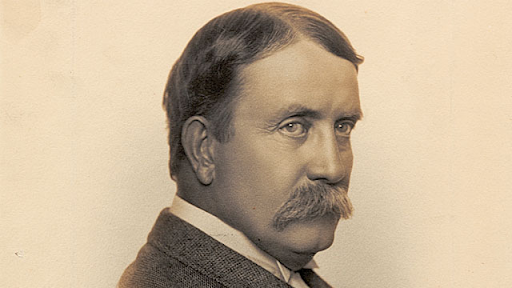
Daniel Hudson Burnham was born in 1846 in New York. His significant contribution to American architecture and urban planning has made him one of the most famous architects worldwide.
Burnham’s design ideology found its roots in America’s City Beautiful Movement, an urban planning philosophy that sought to create cities that were not only functional but also aesthetically pleasing and culturally enriching. His firm, D.H. Burnham & Company, played a pivotal role in shaping the architectural and urban fabric of Chicago during the late 19th and early 20th centuries, contributing to the city’s transformation into a modern metropolis.
Burnham’s most notable projects include the Flatiron Building in New York City and the 1909 Plan of Chicago. This plan introduced the concept of grand boulevards, lakefront parks, and green spaces, all of which continue to define Chicago’s urban character.
8. Geoffrey Bawa

Geoffrey Bawa was born in 1919 in Sri Lanka. He is distinguished as one of the most influential and famous architects in the realm of tropical modernism. His unique approach to architecture has left a mark on the landscape of South Asia and beyond.
Bawa seamlessly blended the principles of modern architecture with the vernacular traditions and tropical environment of Sri Lanka. His design philosophy centred around creating spaces that harmonized with nature, allowing the outdoors to become an integral part of the architecture. His projects often featured open courtyards, lush gardens, and natural ventilation systems, promoting sustainability and a deep connection with the environment.
Some of Bawa’s most renowned works include the Lunuganga Estate in Bentota, the Kandalama Hotel, and the Sri Lankan Parliament Building. His work has earned him numerous awards, including the prestigious Aga Khan Award for Architecture.
7. Tadao Ando

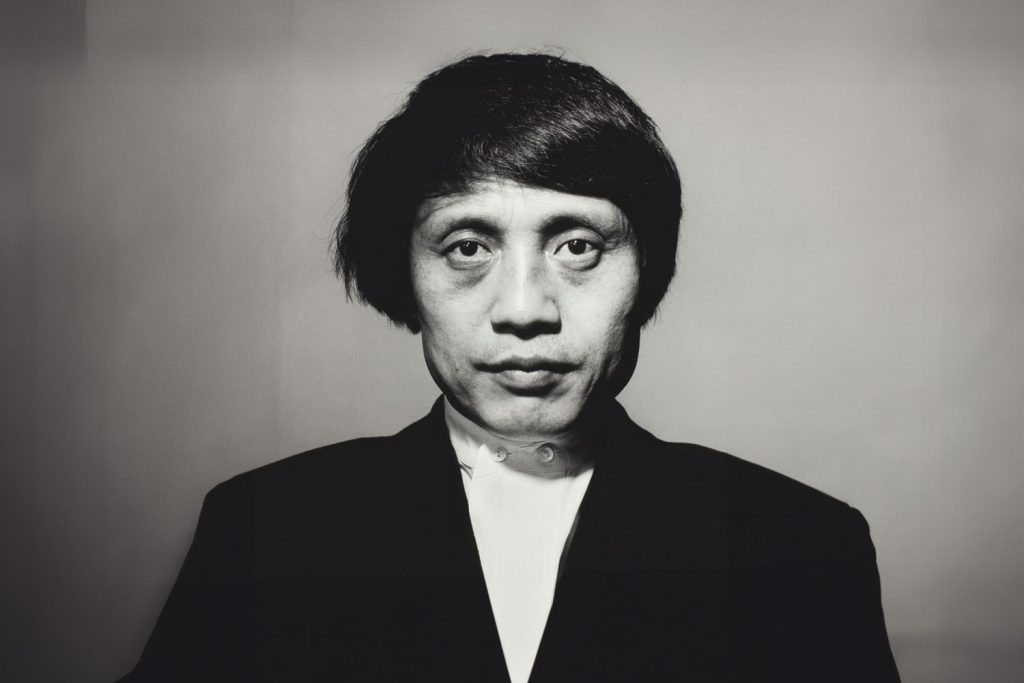
“Architecture is the art and science of making sure that our cities and buildings actually fit with the way we want to live our lives.”
Tadao Ando, who was born in Osaka, Japan on September 13, 1941, is renowned for his minimalist designs that strategically employ natural materials and optimize the use of light. His work is characterized by its simplicity, emphasis on spatial relationships, and utilization of concrete materials. Ando’s architecture aims to achieve a condition of harmony between the surrounding environment and numerous structures.
Notable for: The Church of the Light, which is situated in Ibaraki, Japan. This modest concrete church, which was completed in 1989, is a testament to Ando’s capacity to construct profoundly spiritual spaces with minimal resources. His minimalist yet theatrical artistic approach is exemplified by the dynamic interaction between light and shadow in the chapel, where a cross-shaped incision in the wall enables light to pass through.
6. Santiago Calatrava
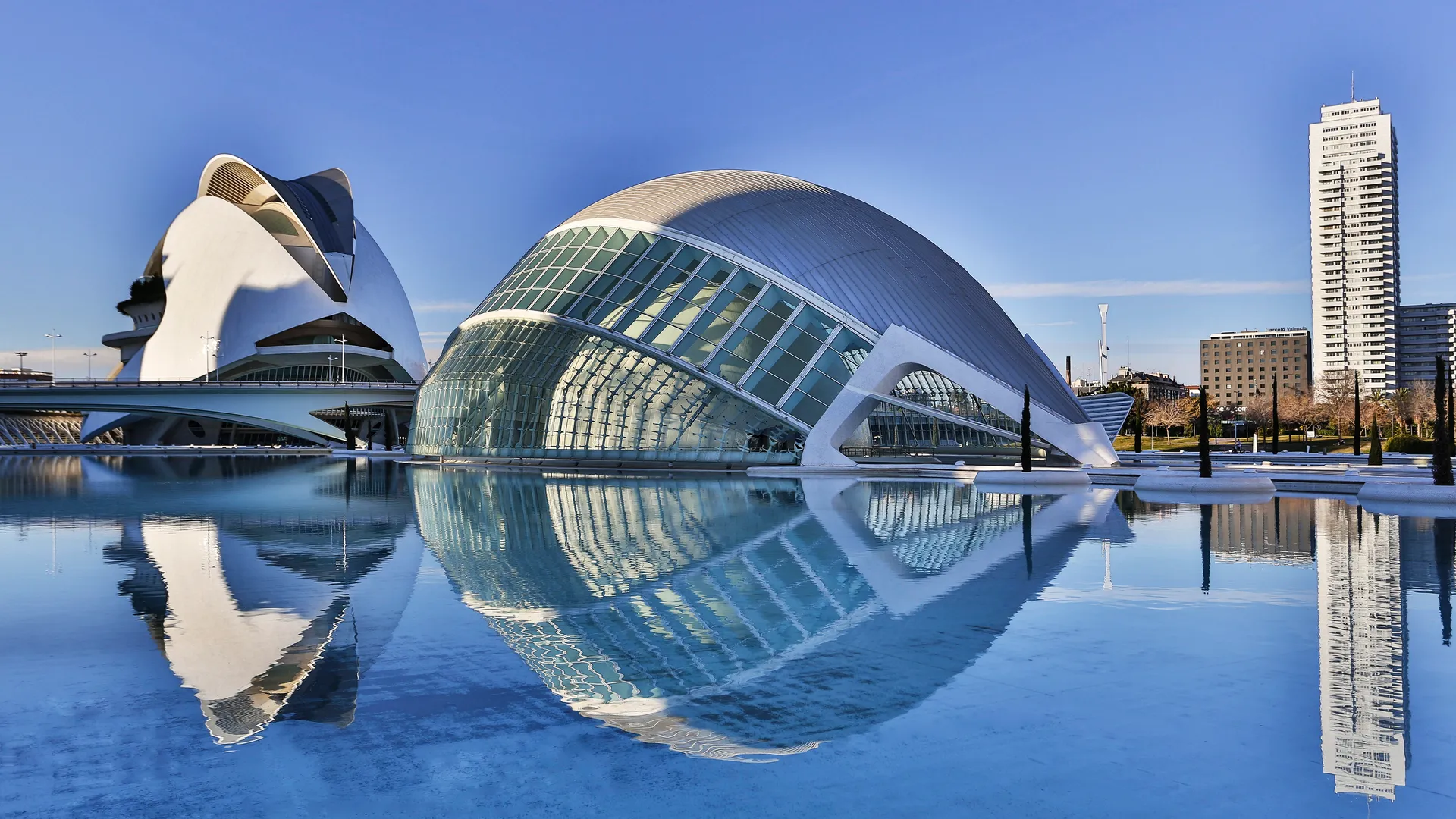

“Architects have to dream. We have to search for our own worlds.”
Born in Valencia, Spain, on July 28, 1951, Santiago Calatrava is a well-known architect noted for his avant-garde designs that deftly combine technical ideas. The elegant and expressive designs of Calatrava’s works are well-known; they frequently reflect the surroundings. They deftly combine organic esthetic appeal with utility.
Notable feature: Valencia, the City of Arts and Sciences in Spain. This cultural complex, built in phases from 1996 to 2009, exemplifies Calatrava’s distinct aesthetic of combining organic forms with contemporary design. The visually stunning white monuments, like the Prince Felipe Museum of Sciences and the L’Hemisfèric, have become well-known emblems of his architectural ideology.
5. Norman Foster


“As an architect, you design for the present, with an awareness of the past, for a future which is essentially unknown.”
Norman Foster, born on June 1, 1935, in Manchester, United Kingdom, is widely considered as one of the most renowned modern famous architects. Foster is well-known for his cutting-edge architectural designs that promote sustainability and innovation. His designs frequently include cutting-edge technology and materials, resulting in energy-efficient structures.
Recognized for its architectural excellence, The Gherkin is situated at 30 St Mary Axe in London, United Kingdom. Completed in 2003, the Gherkin is a prominent emblem of modern London. Owing to its energy-efficient design and unique cylindrical form, it is a prominent symbol in the urban skyline. The Gherkin was a trailblazer in ecological design, employing natural ventilation and other environmentally sympathetic elements to reduce its ecological footprint.
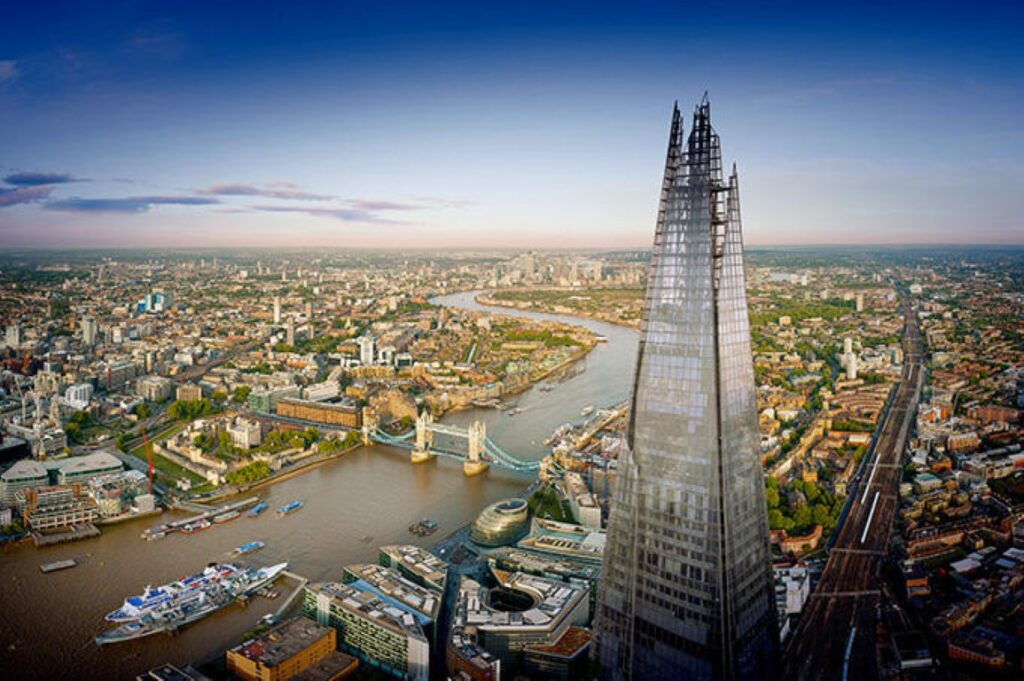

4. Renzo Piano
“One of the great beauties of architecture is that each time, it is like life starting all over again.”
Renzo Piano, an Italian-born architect who received the Pritzker Architecture Prize in 1998, was born on September 14, 1937. He established the Renzo Piano Building Workshop, an influential architectural practice noted for its emphasis on teamwork and investigation. One of the most well-known famous architects working today, Piano is renowned for his use of airiness, transparency, and eco-friendliness in his projects.
Best known for: The Shard, London, United Kingdom. At 95 floors and 309.6 metres in height, The Shard is the highest structure in the United Kingdom. It was completed in 2012. Its glass pyramidal shape provides spectacular views of London. The complex includes a business centre, a hotel, apartments, restaurants, and an observation deck with 360-degree views of the city below. To say that The Shard is a monument to Renzo Piano’s unique vision would be an understatement.
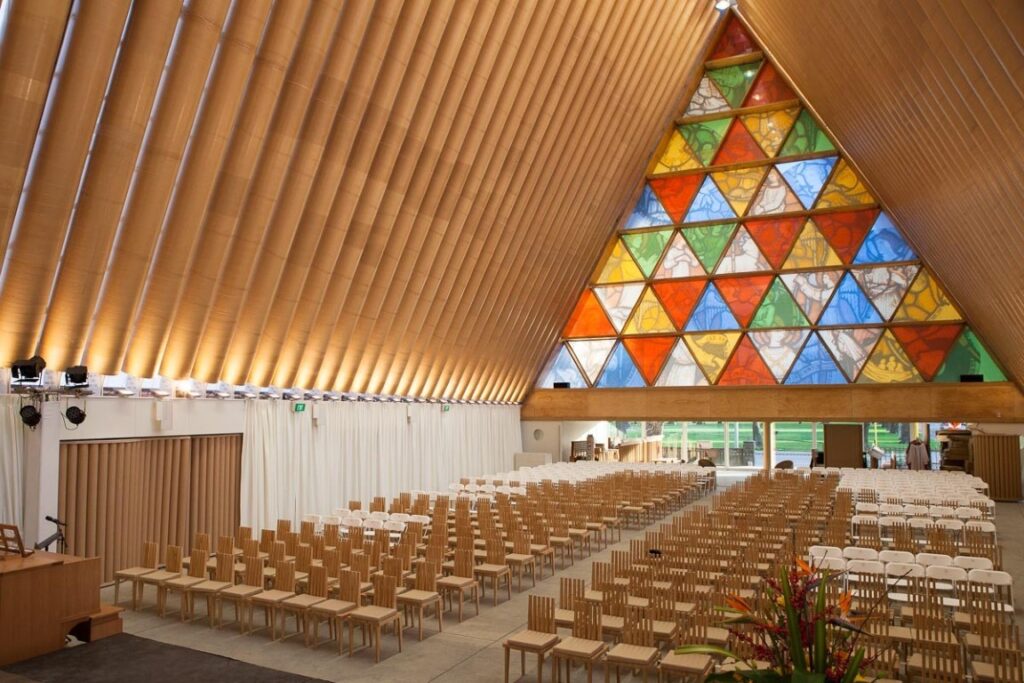

3. Shigeru Ban
“Sustainable architecture is not just about materials and technology; it is about understanding and respecting nature.”
Shigeru Ban, an internationally renowned famous architect and one of Japan’s most well-known famous architects, was born in Tokyo on August 5, 1957. Ban is well-known all over the world for his pioneering use of materials and his humanitarian efforts.
Best known for: Christchurch, New Zealand’s Cardboard Cathedral is its most recognizable landmark. Shigeru Ban created the Cardboard Cathedral after the 2011 earthquake destroyed the real Christ Church Cathedral. Ban’s commitment to ecological design and his ability to build useful environments in the face of hardship is on full display in this astonishing project, constructed entirely of cardboard tubes and lumber. Shigeru Ban’s position as one of the most renowned architects alive today is cemented by his humanistic approach to design, which is on full display in The Cardboard Cathedral.
These renowned architects, through their visionary designs and philosophies, have transformed the architectural landscape, inspiring future generations and pushing the boundaries of what is possible in the built environment. Their famous projects serve as testaments to their creativity, innovation, and commitment to making a lasting impact on the world of famous architectures.

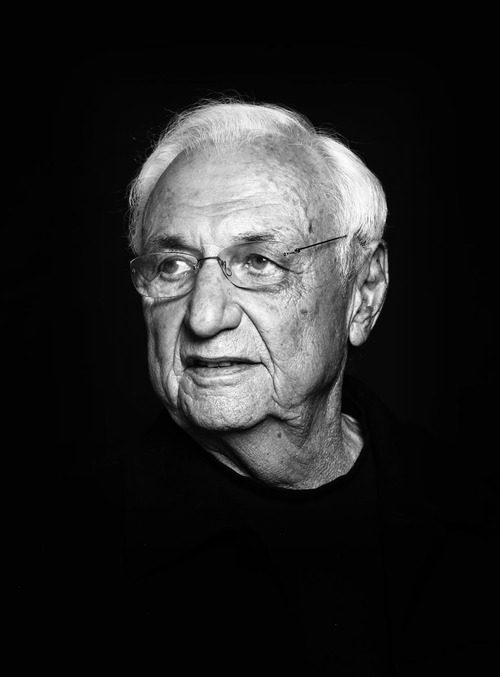
2. Frank Gehry
“Architecture should speak of its time and place, but yearn for timelessness.”
Frank Gehry is a Canadian-American architect known for his sculptural and deconstructivist work. He was born on February 28, 1929, in Toronto, Canada. One of the most well-known famous architects working today, Gehry is known for creating works that combine unconventional materials and unconventional construction methods to create striking visual effects.
Best known for: Bilbao, Spain’s Guggenheim Museum One of Frank Gehry’s most recognizable works is the Guggenheim Museum Bilbao, which opened to the public in 1997. Titanium covering its façade, which has sweeping curves and asymmetrical geometries, has made it an icon of contemporary design. The interior halls of the museum, with their dynamic layouts and ample natural light, create an aesthetically pleasing setting for displaying modern art. Frank Gehry’s reputation as one of the world’s preeminent architects has been further enhanced by his work on the Guggenheim Museum Bilbao.
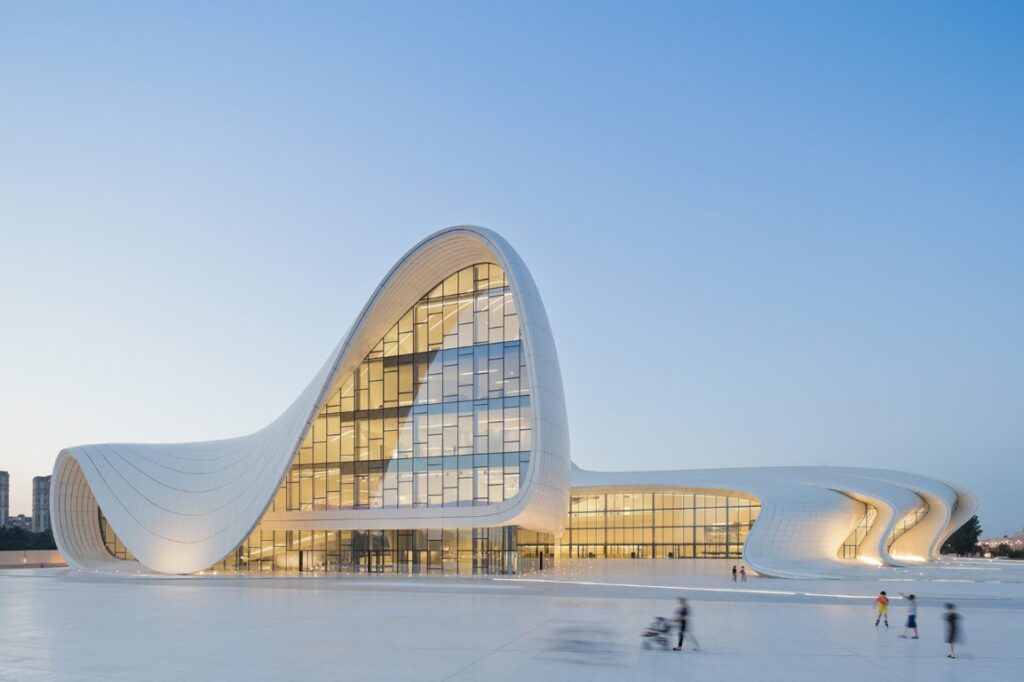

1. Zaha Hadid
“I really believe in the idea of the future.”
And the world most famous architect today is Zaha Hadid. Who was born on October 31, 1950, in Baghdad, Iraq. In 2004, she made history by being the first female recipient of the Pritzker Architecture Prize. Hadid’s groundbreaking style of famous architectures broke new ground by fusing organic forms with cutting-edge technology.
Best known for: Heydar Aliyev Center, Baku, Azerbaijan. Cultural centre that was finished in 2012 and serves as a monument to Zaha Hadid’s outstanding skill. The fluidity of its design defies conventional ideas of what an architectural shape should be. The white, wave-like exterior of the skyscraper has undulating curves that were inspired by natural settings. There are galleries, a meeting room, a library, and a museum within. Zaha Hadid’s place in architectural history will be forever cemented by her work on the Heydar Aliyev Centre.




